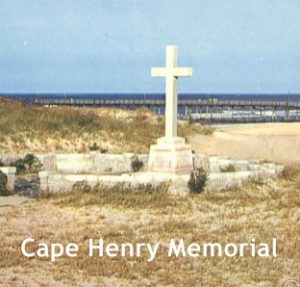On April 26…
“We need open minds and open hearts when we wrestle with the past and ask questions of it, and the answers it will provide are in nobody’s pocket. If history offers no obvious solutions, however, it does at least provide the comfort of knowing that failure is nothing new.”
~ Eamon Duffy
1607 – After a voyage of 144 days, an expedition of English colonists went ashore in Virginia at Cape Henry (named in honor of Henry Frederick Stuart, the elder of two sons of King James I of England. The granite cross memorial shown above marks the site where the settlers first set foot on American soil.
Captain Christopher Newport, with his three ships, Susan Constant, the Godspeed, and the Discovery, and a group of 104 men and boys, subsequently explored the area and established Jamestown (originally James Forte, James Towne and James Cittie) on an island which became the first permanent English settlement in North America.

1777 – Two years after Paul Revere’s midnight ride in Massachusetts, Sybil Ludington took an even longer ride, from New York to Connecticut. The 16-year old daughter of Colonel Henry Ludington made a journey twice as long as Revere’s (she rode 40 miles) to warn the militia of an attack in Danbury, CT.
Commissioned by her father, who knew that Sybil was familiar with the terrain, the young girl set out from the family home in Patterson, NY at 9pm. She rode through the night in Putnam County, New York to warn approximately 400 militiamen under the control of her father that British troops were burning Danbury, where the Continental Army had a supply depot.
By the time she returned home, soaked with rain and exhausted, the 400 members of the militia she had alerted had assembled at her father’s home and were ready to march. They arrived too late to save Danbury, but at the start of the Battle of Ridgefield, they were able to drive the British back to Long Island Sound.
For her heroic acts, Sybil received personal thanks from General George Washington of the Continental Army and General Rochambeau, the French commander fighting alongside the patriots.
In 1975, Sybil Ludington was honored with a postage stamp in the “Contributors to the Cause” United States Bicentennial series.

1865 – Confederate General Joseph E. Johnston surrendered his army to General William Tecumseh Sherman at the Bennett Place near Durham, North Carolina. But it wasn’t quite as simple as it sounds.
The two generals had signed a surrender agreement eight days earlier but the terms had been rejected by the presidential cabinet in Washington because they exceeded the terms that General Ulysses Grant had given General Robert E. Lee at Appomattox on April 9.
The initial agreement between Sherman and Johnston called for resolutions of political issues, including the reestablishment of state governments, return of some weapons to state arsenals and civil rights after the war. Those were all overruled by Secretary of War Edwin Stanton and the cabinet.
The revised agreement signed on this date disbanded all active Confederate forces in North Carolina, South Carolina, Georgia, and Florida, totaling 89,270 soldiers, as the largest group to surrender during the Civil War.

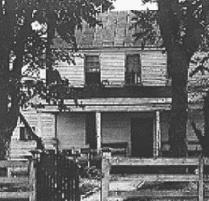
1865 – John Wilkes Booth was killed when Union soldiers tracked him down to a Virginia farm 12 days after he assassinated President Abraham Lincoln.
After shooting the president, Booth and his accomplice, David Herold, made their way across the Anacostia River and headed toward southern Maryland.
The pair stopped at Dr. Samuel Mudd’s home, where Mudd treated Booth’s injured leg. This earned Mudd a life sentence in prison when he was implicated as part of the conspiracy, but the sentence was later commuted. Booth then found refuge for several days at the home of Thomas A. Jones, a Confederate agent, before securing a boat to row across the Potomac to Virginia.
After receiving aid from several Confederate sympathizers, Booth’s luck finally ran out. The countryside was swarming with military units looking for Booth, although few shared information since there was a $20,000 reward. While staying at the farm of Richard Garrett, Federal troops arrived on their search but soon rode on. The unsuspecting Garrett allowed his suspicious guests to sleep in his barn, but he instructed his son to lock the barn from the outside to prevent the strangers from stealing his horses.
A tip led the Union soldiers back to the Garrett farm, where they discovered Booth and Herold in the barn. Herold came out, but Booth refused. The building was set on fire to flush Booth out into the open, but he was shot by Union soldier Thomas P. “Boston” Corbett while still inside.
Booth, fatally wounded in the neck, was dragged from the barn to the porch of Garrett’s farmhouse, where he died three hours later. The bullet had pierced three vertebrae, and partially severed his spinal cord, paralyzing him. Asking that his hands be raised to his face so he could see them, Booth uttered his last words, “Useless, useless,” and died as dawn was breaking.
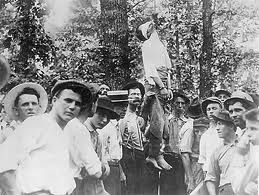
1913 – Thirteen-year-old Mary Phagan was found sexually molested and murdered in the basement of the Atlanta, Georgia, pencil factory where she worked. Her murder later led to one of the most disgraceful episodes of bigotry, injustice, and mob violence in American history.
Next to Phagan’s body were two small notes that attempted to pin the crime on Newt Lee, the night watchman at the factory. Lee was arrested, but it quickly became evident that the notes were a crude attempt by the barely literate Jim Conley to cover up his own involvement. Conley was the factory’s janitor, a black man, and a well-known drunk.
Conley then decided to shift the blame toward Leo Frank, the Jewish owner of the factory. Despite the absurdity of Conley’s claims, they nevertheless took hold. The case prosecutor was Hugh Dorsey, a notorious bigot and friend of Georgia’s populist leader, Tom Watson. Reportedly, Watson told Dorsey, “Hell, we can lynch a ni**er anytime in Georgia, but when do we get the chance to hang a Yankee Jew?”
Frank was tried by Judge Leonard Roan, who allowed the unfair trial to go forward even after he was privately informed by Conley’s attorney that Conley had admitted to Frank’s innocence on more than one occasion. The trial was packed with Watson’s followers and readers of his racist newspaper, Jeffersonian. The jury was terrorized into a conviction despite the absence of evidence against Frank.
Georgia governor John Slaton initiated his own investigation and quickly concluded that Frank was innocent. Three weeks before his term ended, Slaton commuted Frank’s death sentence in the hope that he would eventually be freed when the publicity died down. However, Watson had other plans: He mobilized his supporters to form the Knights of Mary Phagan. Thousands of Jewish residents in Atlanta were forced to flee the city because police refused to stop the lynch mob.
The “Knights” then made their way to the prison farm where Frank was incarcerated. They handcuffed the warden and the guards and abducted Frank, bringing him to Marietta, Phagan’s hometown. There he was hanged from a giant oak tree. Thousands of spectators came to watch and have their picture taken in front of his lifeless body. The police did nothing to stop the spectacle.
Although most of the country was outraged and horrified by the lynching, Watson remained very popular in Georgia. In fact, he was elected to the U.S. Senate in 1920.

1937 – The German military tested its powerful new air force – the Luftwaffe – on the Basque town of Guernica in northern Spain. Although the independence-minded Basque region opposed General Francisco Franco’s Nationalist forces in the Spanish Civil War, Guernica itself was a small rural city of only 5,000 inhabitants that declared neutrality in the conflict.
With Franco’s approval, the cutting-edge German aircraft began their unprovoked attack at 4:30 p.m., the busiest hour of the market day in Guernica. For three hours, the German planes poured down a continuous and unopposed rain of bombs and gunfire on the town and surrounding countryside. One-third of Guernica’s 5,000 inhabitants were killed or wounded, and fires engulfed the city and burned for days.
The indiscriminate killing of civilians at Guernica aroused world opinion and became a symbol of fascist brutality. Unfortunately, by 1942, all major participants in World War II had adopted the bombing innovations developed by the Nazis at Guernica, and by the war’s end, in 1945, millions of innocent civilians had perished under Allied and Axis air raids.
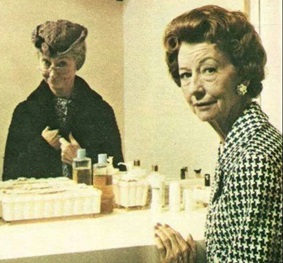
1973 – Actress Irene Ryan, best known for her portrayal of “Granny” on the long-running TV series The Beverly Hillbillies, died from a malignant brain tumor and heart disease at the age of 70.
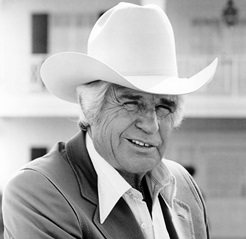
1981 – Actor Jim Davis, a longtime character actor in several movie and television westerns, but best known for his role as family patriarch Jock Ewing in the CBS television series Dallas, died of cancer at the age of 71.
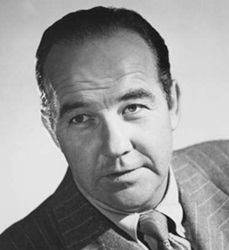
1986 – Academy Award winning actor Broderick Crawford died at the age of 74 following a series of strokes.
Crawford reached the pinnacle of his acting career when he was cast as Willie Stark, a character inspired by and closely patterned after the life of Louisiana politician Huey Long, in All the King’s Men.
Crawford’s performance as the bullying, blustering Governor Stark won him the Academy Award for Best Actor. He later starred in the role of Chief Dan Mathews in the television series Highway Patrol from 1955-59.

1986 – The world’s worst nuclear accident to date occurred at the Chernobyl nuclear plant near Kiev in Ukraine. The full toll from this disaster is still being tallied, but experts believe that thousands of people died and as many as 70,000 suffered severe poisoning.
Some reports estimate that as many as 4,000 clean-up workers died from radiation poisoning. Birth defects among people living in the area have increased dramatically. Thyroid cancer has increased tenfold in Ukraine since the accident.
In addition, a large area of land may not be livable for as much as 150 years. The 18-mile radius around Chernobyl was home to almost 150,000 people who had to be permanently relocated.

1989 – Actress Lucille Ball died following an aortic rupture. She was 77.
While Ball’s movie career was not particularly noteworthy, she found everlasting fame in television as the star of I Love Lucy, The Lucy–Desi Comedy Hour, The Lucy Show, Here’s Lucy, and Life With Lucy.
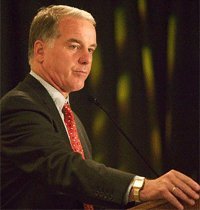
2000 – Vermont Gov. Howard Dean signed the nation’s first bill allowing same-sex couples to form civil unions. Dean signed the legislation – which went into effect on July 1 – without a public ceremony but later stated, “There is much to celebrate about this bill. Those celebrations, as the subject of this bill, will be private. They will be celebrated by couples and their families, but people making commitments to each other. I believe this bill enriches all of us as we look with new eyes at a group of people who have been outcasts for many, many generations.”
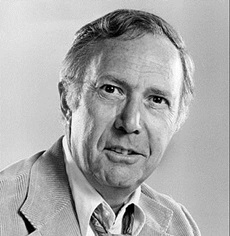
2005 – Actor / voiceover talent Mason Adams died of natural causes at the age of 86.
Adams had a prolific television and radio voiceover career; most notably for Chiffon margarine (“Chiffon’s so delicious it fooled even you, Mother Nature.“), Crest toothpaste (“Helps stop cavities before they start.“), Smucker’s preserves (“With a name like Smucker’s, it has to be good!“), Cadbury Creme eggs (“Nobunny knows Easter better than him!“) … but he is perhaps best known for his role as Managing Editor Charlie Hume in the television series Lou Grant.
Compiled by Ray Lemire ©2018 RayLemire.com. All Rights Reserved.
